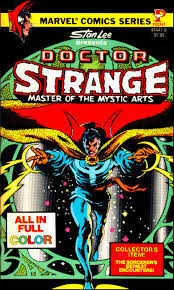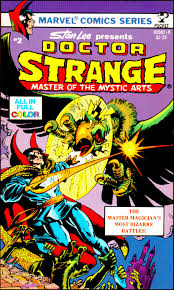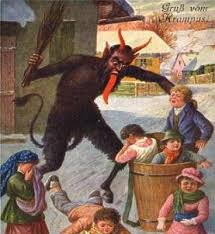 This past week brought some presumably good news: the national unemployment rate dipped from 10.2 to 10 percent. Naturally, everyone (except for those annoying skeptics) hailed the end of the recession and the start of a long-sought recovery.
This past week brought some presumably good news: the national unemployment rate dipped from 10.2 to 10 percent. Naturally, everyone (except for those annoying skeptics) hailed the end of the recession and the start of a long-sought recovery.
Here's what we can expect...
From a Dec. 7 story in USA Today:
[S]ome experts predict [that temporary workers] could constitute up to a quarter of the workforce in a few years.... Gary Mathiason, vice chairman of Littler, the No. 1 employment law firm, predicts half the jobs created in the recovery will be filled by contractors, consultants and other temps.
In other words, a massive segment of the workforce -- categorized as "employed" -- will be either underemployed or living precariously from one transient temp/consulting/contract job to the next (remember: when one of those jobs end, you can't collect unemployment benefits). In short, we're becoming a society of day laborers.
From a Dec. 1 AP story -- "New $100 Billion Safety Net for Jobless in Works":
Many economists say increasing or extending unemployment payments is among the most efficient ways to jump-start the economy. It's easy to do and the people getting the benefits typically spend the money quickly. With the economy in a fragile recovery, cutting off benefits could be harmful.
"It would significantly raise the risk of falling back into recession next year," said Mark Zandi, chief economist at Moody's Economy.com.
Not all economists agree, however, especially if the benefits are financed by adding to the nation's $12 trillion debt. There's also evidence that unemployment insurance actually raises the jobless rate slightly because some people don't look for work as diligently as they do when they're on it.
"There are two downsides to extending unemployment benefits. One is the higher budget deficits that you get. Two is that unemployment benefits create a disincentive for some people to go back to work," said Keith Hennessey, an economic adviser to former President George W. Bush.
What can you say about all those shiftless slugs out there, reveling in their "handouts," whiling away their days watching Oprah and eating bonbons? Guess there's no incentive in losing your house.
We're not out of the woods yet, as Robert Reich relates in "The Truth About Jobs that No One Wants to Tell You":
[T]en percent unemployment really means twenty percent underemployment or anxious employment. All of which translates directly into late payments on mortgages, credit cards, auto and student loans, and loss of health insurance. It also means sleeplessness for tens of millions of Americans.
Count me in (the recession's shunted my family into a limbo of uncertainty, insomnia, and impending disintegration).
That sourpuss Robert Reich (again) on the "The Economic Reality that No One Wants to Talk About":
The basic assumption that jobs will eventually return when the economy recovers is probably wrong. Some jobs will come back, of course. But the reality that no one wants to talk about is a structural change in the economy that's been going on for years but which the Great Recession has dramatically accelerated.
Under the pressure of this awful recession, many companies have found ways to cut their payrolls for good. They've discovered that new software and computer technologies have made workers in Asia and Latin America just about as productive as Americans, and that the Internet allows far more work to be efficiently outsourced abroad.
This means many Americans won't be rehired unless they're willing to settle for much lower wages and benefits. Today's official unemployment numbers hide the extent to which Americans are already on this path. Among those with jobs, a large and growing number have had to accept lower pay as a condition for keeping them. Or they've lost higher-paying jobs and are now in a new ones that pays less.
Yet reducing unemployment by cutting wages merely exchanges one problem for another. We'll get jobs back but have more people working for pay they consider inadequate, more working families at or near poverty, and widening inequality. The nation will also have a harder time restarting the economy because so many more Americans lack the money they need to buy all the goods and services the economy can produce.
So let's be clear: The goal isn't just more jobs. It's more jobs with good wages....
Without... productivity-enhancing investments, a steadily increasing number of Americans will be priced out of competition in world economy. More and more Americans will face a Hobson's choice of no job or a job with lousy wages.
Which means folks will fall into one of two camps: the miserably unemployed or the miserably employed. Among the latter, I know a number who are aching to be laid off. For them, a stint on the dole represents a godsend next to a gulag of 60-hour workweeks, eviscerated benefits, and endless threats.
Sure, they're "grateful to have a job." They're also deeply resentful -- tired of toiling under grueling, 19th-century conditions. They fantasize about having a heart-to-heart with the boss, where they can finally, triumphantly say: "Do me a favor. Get it over with. Can me."Which ties back to findings presented in my Nov. 24 post -- by and large, the employed are way stressed out... cashing in sick days and courting professional assistance. Survey results from HR and benefits consultant Watson Wyatt show that:
Stressed-out workers are calling in sick more often and turning to employee assistance programs for help in greater numbers in the wake of layoffs at many firms.
Not surprisingly: "78 percent of employers cited 'excessive work hours' as a leading cause of worker stress." (How nice of companies to offer EAP services to lessen that stress... a little like a man who beats his wife but hands her a Band-Aid afterward).
No question: it's bad for the survivors (a.k.a. people who are still working). However, they, at least, can avail themselves of EAP services. Who do the unemployed turn to? How do they cope? It's hardly as though they have discretionary income to squander on counseling. ("Honey, do we pay the therapist or do we eat?")
For the last word, a sobering, non-sugar-coated assessment from Elizabeth Warren, weighing in on "America Without a Middle Class":
America today has plenty of rich and super-rich. But it has far more families who did all the right things, but who still have no real security. Going to college and finding a good job no longer guarantee economic safety. Paying for a child's education and setting aside enough for a decent retirement have become distant dreams. Tens of millions of once-secure middle class families now live paycheck to paycheck, watching as their debts pile up and worrying about whether a pink slip or a bad diagnosis will send them hurtling over an economic cliff.
 The Polish term sybirak... is synonymous to the Russian counterpart sibiryak (a dweller of Siberia) and generally refers to all people resettled to Siberia... it is in most cases used to refer to Poles who have been imprisoned or exiled to Siberia.
The Polish term sybirak... is synonymous to the Russian counterpart sibiryak (a dweller of Siberia) and generally refers to all people resettled to Siberia... it is in most cases used to refer to Poles who have been imprisoned or exiled to Siberia. Of course, it was his good fortune to be removed from the train as he may well have perished in a Siberian prison camp. As for being mercifully awakened by a dog...? In many cultures, the black dog represents death (in some Scandinavian countries, it's a white dog). One thinks of Cerberus, the hellhound. Or of Cadejo: "a big black dog that haunts naughty young men who walk late at night on rural roads." In this case, ironically, the black dog brought life (unless the black dog was death and, inexplicably, spared the man).
Of course, it was his good fortune to be removed from the train as he may well have perished in a Siberian prison camp. As for being mercifully awakened by a dog...? In many cultures, the black dog represents death (in some Scandinavian countries, it's a white dog). One thinks of Cerberus, the hellhound. Or of Cadejo: "a big black dog that haunts naughty young men who walk late at night on rural roads." In this case, ironically, the black dog brought life (unless the black dog was death and, inexplicably, spared the man). Who knows what fate holds? When it is better to be expelled from a train than to stay aboard.
Who knows what fate holds? When it is better to be expelled from a train than to stay aboard.




























